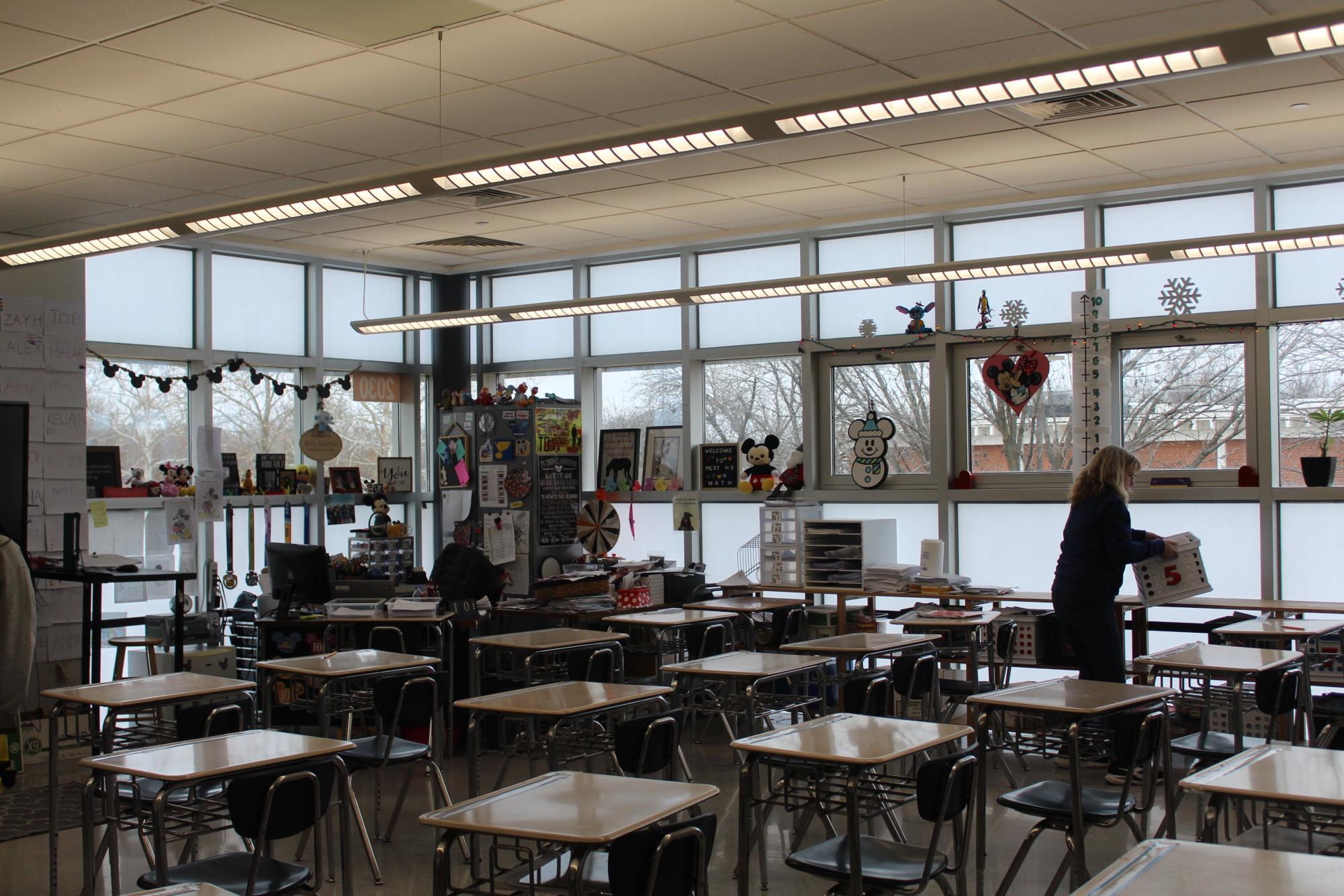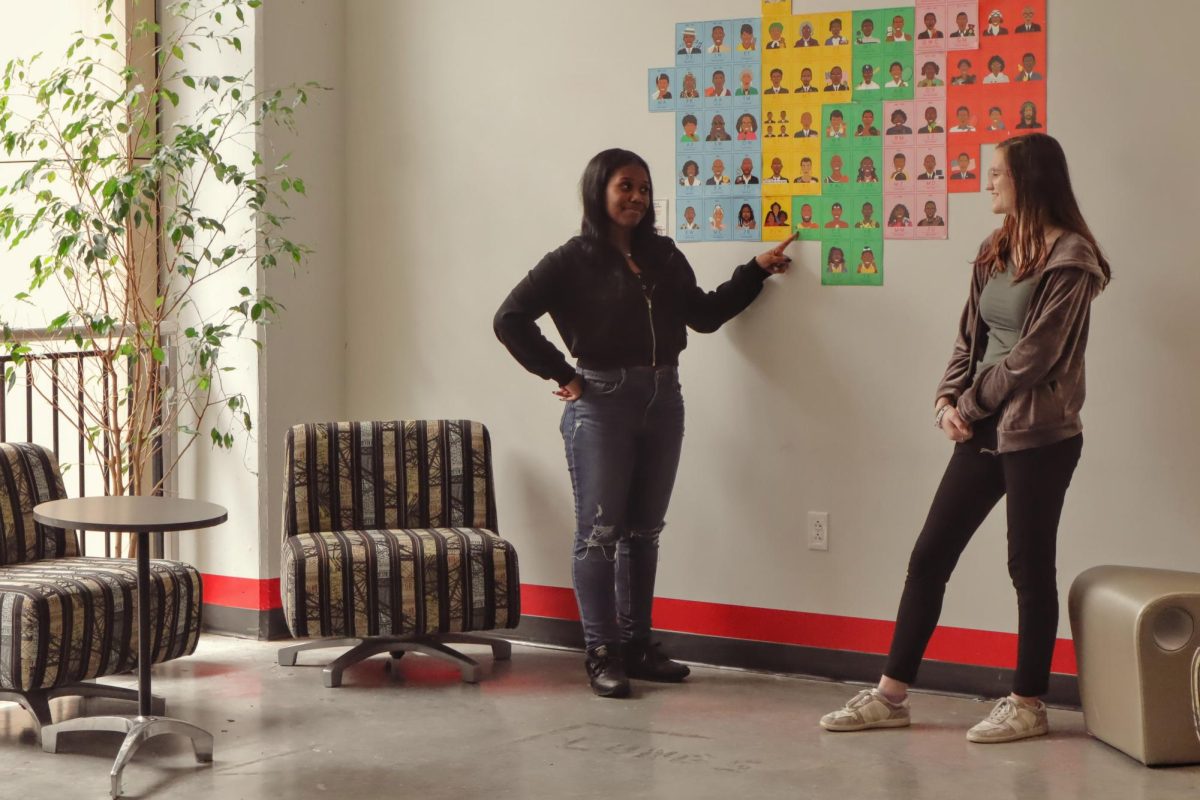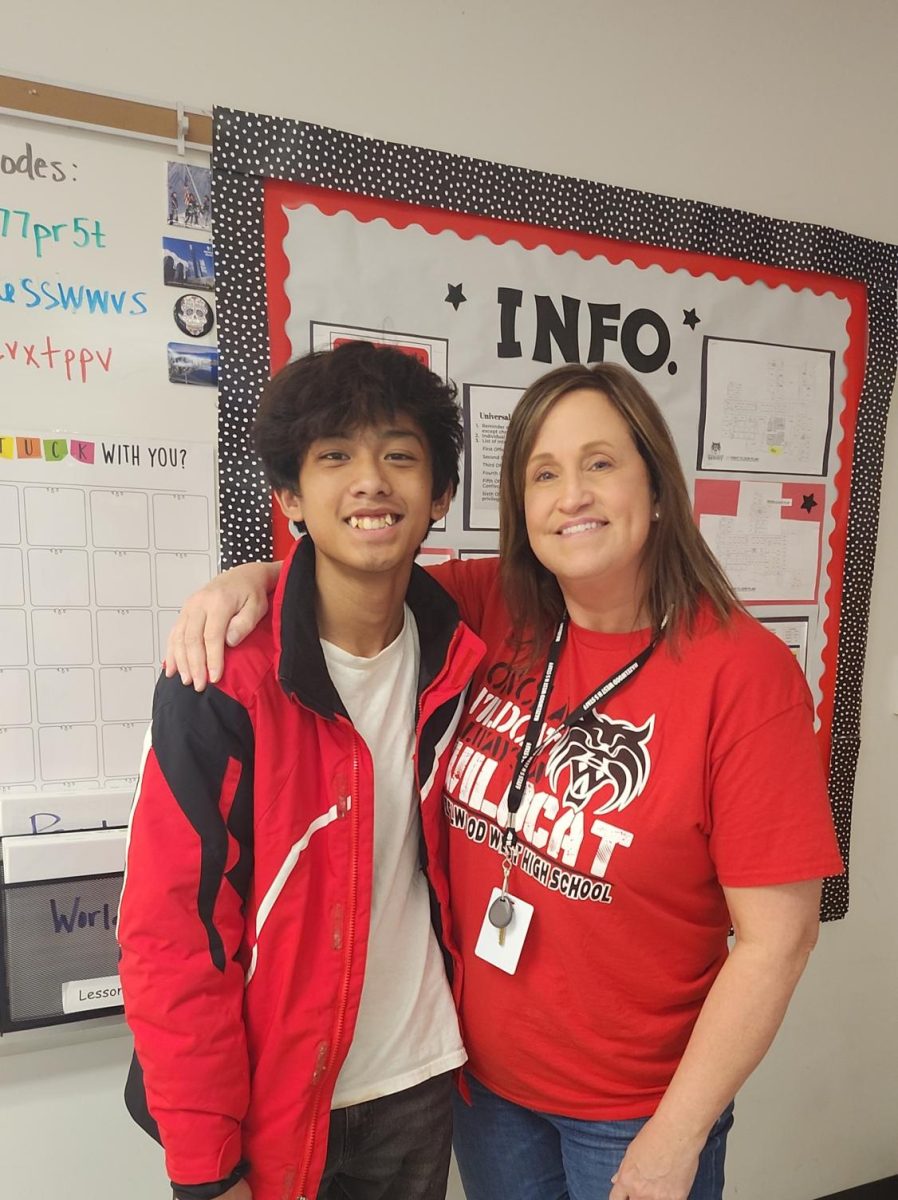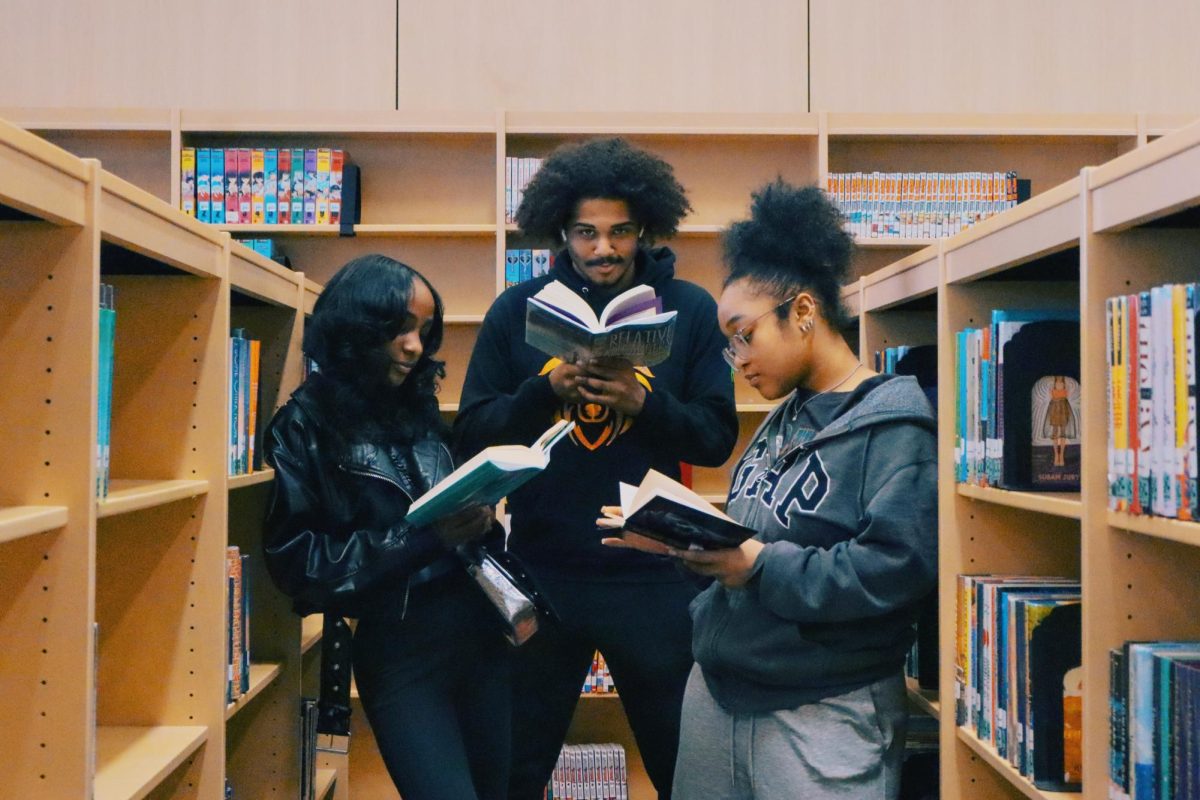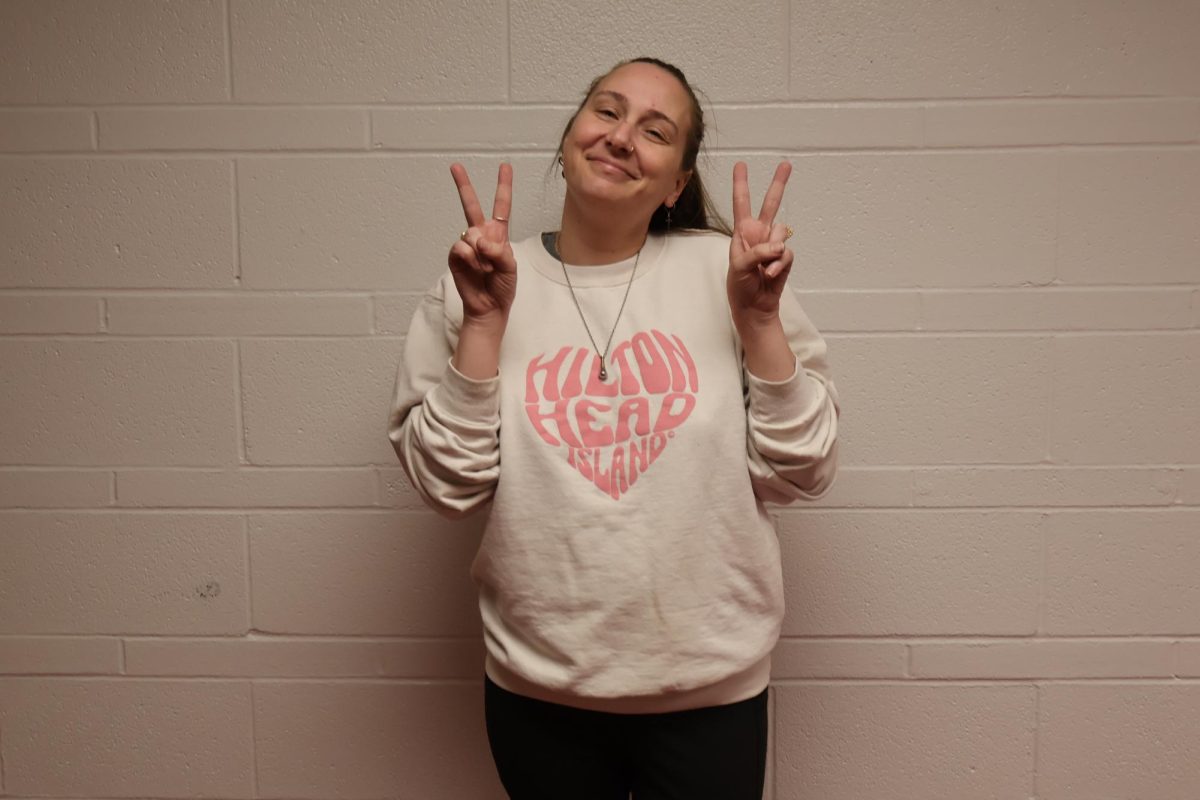In today’s educational environment, student engagement is essential, and Hazelwood West is at the forefront of classroom innovation; Teachers like Mrs. Erin Silva, Mrs. Shannon Kintz and Mrs. Lisa Harper are pioneering the creation of personalized learning spaces. They have moved away from the traditional arrangement of desks in rows and have instead transformed classrooms with poster-covered walls, dimmed lighting, comfortable seating and more.
Mrs. Shannon Kintz:
Kintz has dedicated 20 years to teaching English, having spent 15 years at Hazelwood Central and the last five years at Hazelwood West Although her classroom may be dimly lit, her vibrant personality radiates throughout the space. The walls are adorned with inspirational quotes and images, while large windows invite natural light. A collage of group pictures from past classes creates a warm and welcoming atmosphere in room 220. Kintz believes that fostering a sense of comfort is essential to challenge her students, encouraging them to be more vulnerable and engaged in the classroom. One of her favorite features of the classroom is the variety of lighting options available.
“I love having a window for the natural lighting and fresh air. I also add a lamp or another string of white lights every year just to make the room feel more cozy and homey. This year I found a rug and pillows on Facebook Marketplace that I brought in so students have the option of sitting on the floor,” Kintz said.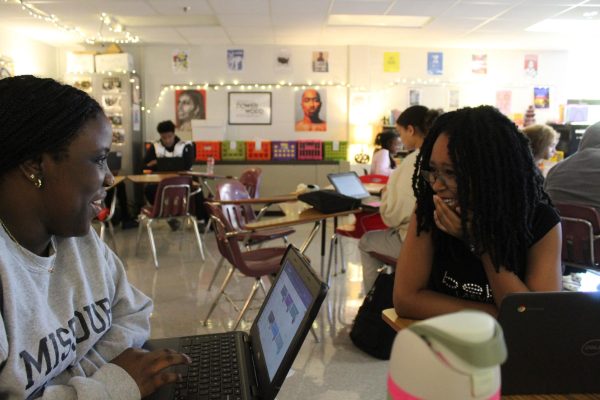
“When in Mrs. Kintz’s room, I really enjoyed the lighting and organized atmosphere of the room with an overall cozy feel reminding me of home and when I can be comfortable in a space it helps my work ethic and abilities,” Junior Eliana Anderson, student of Kintz’s Honors English II, said.
Research conducted at universities indicates that students demonstrate improved focus and better behavior in dim lighting compared to traditional LED lights in classroom environments. The article emphasizes that grades and the educational system are not straightforward, and encouraging students is a multifaceted process. Transitioning to dimmer lighting is a positive step in this direction. In addition to creating a calming atmosphere, dim lighting enhances students’ information retention, Lolah Slagg from North Star News explains that this ultimately benefits their academic performance in the long run (North Star News).
Mrs. Lisa Harper:
Harper has been teaching for 33 years, with six of those years spent at Hazelwood and two years at Hazelwood West in the math department. Upon entering her bright and expressive classroom, adorned with Disney themes, you can’t help but feel a wave of joy. The walls are decorated with memories and Disney quotes, complemented by bright windows and surrounding plants. Harper appreciates the abundance of natural light that floods the room. Throughout the space, you’ll find past student projects and designs that celebrate the accomplishments of her previous classes. She believes that personalizing her classroom and showcasing her personality positively influences her students’ learning experience.
“I like that my room is up in the corner, away from all the chaos of the main hall. It’s bright and full of fun stuff, which makes it a great spot for me to hang out. I spend most of my time there, and I want it to feel cheerful. Plus, I’m a huge Disney fan, so there’s a ton of Disney stuff in it,” Harper said.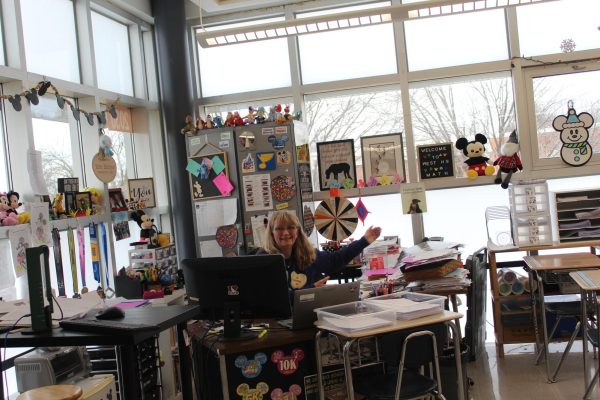
“I liked to check out her room and see all the posters she had. Her classroom was memorable because it featured not just standard math materials but also a collection of Disney decor. Plus, it was nice to see old projects from students hanging around, showing that she cares about keeping their work from over the years, ” Sophomore Catherine Brooks, a student of Harper’s Foundation of Algebra class said.
Numerous articles indicate that students are more engaged and comfortable in personalized and decorated classrooms compared to traditional, bland designs. When educators intentionally create an environment that reflects students’ interests and needs, it can significantly boost engagement. A vibrant classroom filled with relevant displays and student artwork fosters a welcoming atmosphere, encouraging students to take ownership of their learning. Overall, a thoughtfully designed classroom enhances focus and motivation, contributing to a more effective learning experience. Reporter Janelle Cox in her article, The Impact of Classroom Design explains how this independence overall impacts students’ learning (Teachhub).
Mrs. Erin Silva:
Silva has dedicated the past seven years to teaching at Hazelwood West, beginning her journey as a student teacher in the history department in 2016. Her commitment and collaborative spirit have greatly contributed to the school community. Silva’s room, located in the more secluded area of the school in room 255, serves as a cozy corner for her students. It is recognized for its diverse range of seating options, including couches, bean bags and floor seating. To create a more inviting atmosphere, she has implemented light coverings to soften the harshness of the fluorescent lighting also having string lights.
“In my room, I love having different seating options! It lets me move around and join the kids, making it so much easier to connect with them during our lessons. Each year, I like to add new things to the space to switch things up. I’m inspired by thinking back to my high school days and what would have made me feel more at ease and engaged. This way, I can really relate to my students and create an environment that feels warm and inviting,” Silva said.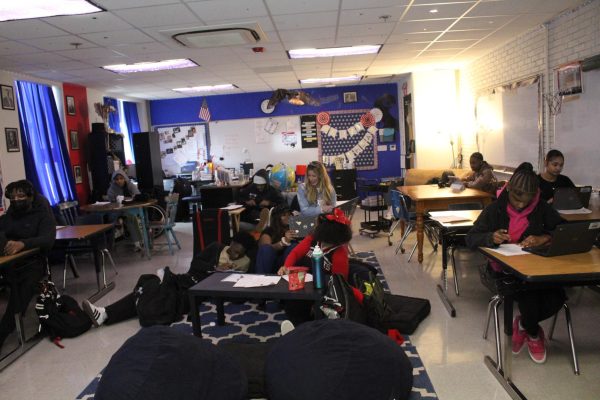
“My favorite thing about Silva’s room is the light covers as someone who gets headaches a lot that helps me out with focusing and I love her flexible seating which gives me the ability to move around while still focusing while she is teaching,” Junior Eve Miloshewski, student of Silva’s U.S History class, said.
Based on research done at various colleges has shown that flexible seating arrangements in classrooms significantly have enhanced student’s learning outcomes. These studies reveal that when students are given the option to choose their seating, they show higher levels of engagement and productivity. The introduction of flexible seating not only promotes comfort and collaboration but also encourages a sense of autonomy, allowing students to choose where and how they learn best. This approach is shown to positively impact student’s overall academic experience and hold a more dynamic and interactive learning environment, as seen by reporter Sara N. Wright in her article Flexible Seating The Classroom (NWCommons).
